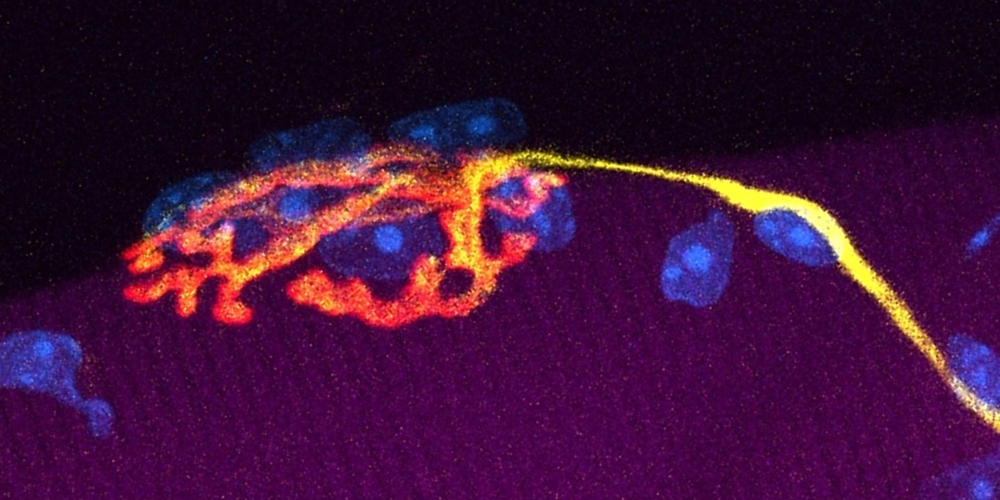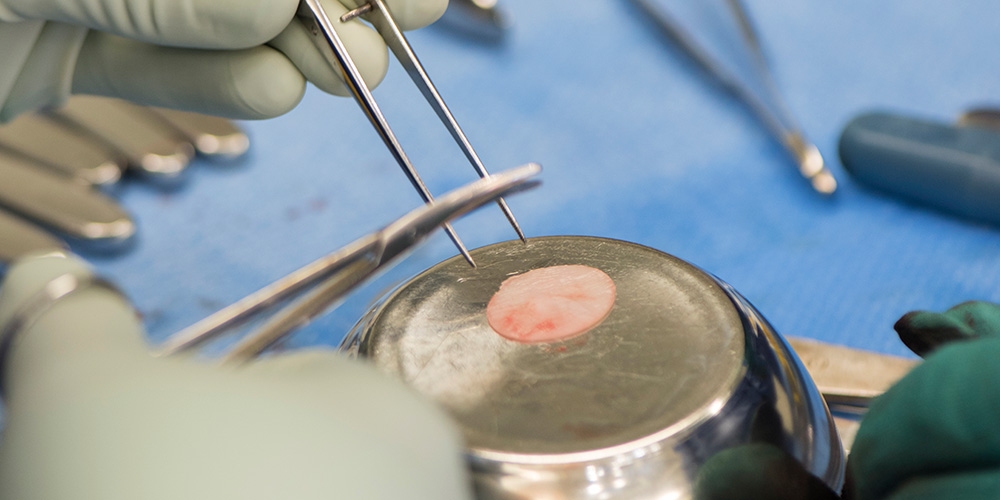“Academic research requires networking and originality”
The University Council of the University of Basel gained a new member at the start of the year: Dr. Michaela Kneissel. She heads the Musculoskeletal Disease Area at the Novartis Institutes for Biomedical Research and is an experienced life sciences and drug development researcher.
29 October 2020
Ms. Kneissel, how would you describe yourself and your work?
I am a researcher in the field of musculoskeletal diseases, and have been for a very long time. I started out in Vienna, which is where I come from originally. After finishing my studies in biology, I then began to conduct research into osteoporosis. This later led to applied research with the goal of identifying and developing pharmacological approaches to treating osteoporosis. Our department’s research currently focuses on discovering medications for osteoporosis, tendinopathy and severe neuromuscular diseases. There have not been any effective pharmacological treatments for these diseases thus far, and they lead to a painful loss of mobility and independence. My team and I are very passionate about our goal, which is to re-establish this mobility. In this respect, science is an integral part of my life and character.
How would you describe yourself in private rather than professional terms?
I’m not much of a hobby person and never have been. My husband and I really like the local region – Basel may be small, but it has a lot of culture. We love going to exhibitions and concerts, enjoy cooking and eating as a couple or with friends, and I also read a lot. I used to be an enthusiastic diver, but that was a while ago now. And because neither of our families live in Basel – mine lives in Vienna and my husband’s in Nice and Paris – we also enjoy spending time in those places.
The months since you joined the University Council have been overshadowed by coronavirus, and everything has moved online. What impressions have you formed of the University of Basel so far?
Of course, getting to know people takes a bit longer under these conditions. For me, getting an insight into the workings of such a longstanding university is a real privilege. Previously, I was mainly only familiar with the Faculty of Science. There are contacts and intersections there for me, such as shared academic interests in the research area of the musculoskeletal system and the Friedrich Miescher Institute (FMI), for which I’m President of the Scientific Advisory Board and which also has joint professorships with the University of Basel. I also regard it as a learning opportunity because the University Council not only focuses on the academic strategy but on the overall university strategy, including infrastructure and financing.
What expertise would you like to contribute to the University Council?
Above all, I would like to contribute greater insights from the life sciences, particularly the intersection between applied research and basic research.
You are familiar with research from both an academic and an applied perspective. What do you think are the biggest differences?
In applied research, people usually work broadly and in collaboration with lots of other people in order to achieve goals in compliance with particular time frames. You cover a wider range of topics relatively quickly. That makes working in large teams incredibly important, because you have to combine so many specialisms to research disease mechanisms and thereby develop medication, which will then need a range of aspects tested. In basic research, on the other hand, the topics are usually not as broad, and you have more time to look into a topic in more depth. Previously, working in large teams wasn’t so widespread, although that has recently started changing because the research issues are becoming ever more complex.
What advantages and disadvantages do you see in applied research?
In applied research, you have uncomplicated access to resources and can try out new approaches relatively quickly. It’s also easier to stop a project if it doesn’t develop in a promising direction. That can be very liberating. And it’s not necessarily so easy to do that in academic basic research, where you often have to publish even if you realize that the insights aren’t that interesting. One disadvantage of applied research, however, is that it’s more short-lived. We sometimes stop even when we haven’t fully answered a research question – simply because in strategic terms, we’d otherwise tie up too much time and resources that we couldn’t then invest in other research questions.
How would you assess the collaboration in the regional life sciences cluster? Where do you still see potential?
In my experience, it’s important to identify issues that are highly interesting and useful for everyone involved, because this then automatically leads to collaboration. Examples of this include the Institute of Molecular and Clinical Ophthalmology Basel and the FMI. The planned opening of the Novartis Campus will certainly also provide additional impetus for these links. Personally, I don’t think that geography alone is important. Our research department works together with whoever is the best fit for a particular subject. From our perspective, collaborations with academic research tend to go very well. That might also be because we work in an area in which there is still a lot of research to do and that isn’t so large, so the barriers between basic and applied research are relatively small. In larger research areas, it can be more difficult to identify common ground.
How will competition in research develop? And what does that mean for the university?
When I look at the European research landscape, I get the impression that the US universities have perhaps been a little more adept at approaching the intersection with applied research in the past, and that collaborations in networks also became more pronounced there earlier on. The situation is now significantly improved here thanks to the funding provided by the European Research Council. I think that the ability to network will remain a key factor when it comes to competitiveness. I also hope that research will be calibrated a little differently in the future, with more emphasis on solid and reproducible results and less on publishing as much as possible in high-impact journals. It would certainly also be beneficial for research if there were a greater willingness to take risks when allocating funds.
Can you elaborate on that?
For example, at the Novartis Research Foundation, we have a small program for innovation that allocates research funding for a limited period. Applications are presented anonymously to the expert committee to ensure that the evaluation is focused above all on the criterion of originality, rather than who has already published how much. This entails a higher level of risk, but I am convinced that this kind of double-blind procedure can help to reorient the competition slightly. Although the fast-track calls in the wake of the coronavirus crisis were not anonymous, there was a noticeable dynamic in the allocation of funds, which should become more of a matter of course in academic research, as should networking.
Dr. Michaela Kneissel
Michaela Kneissel was born in 1966 and studied biology at the University of Vienna, where she obtained her doctorate in 1993. Research stays and a postdoctoral fellowship then led her to University College London and the University of Utah. She has worked for Novartis since 1996, taking on positions of increasing responsibility. She is currently Global Head of the Musculoskeletal Disease Area (MSD) at the Novartis Institutes for Biomedical Research. MSD aims to conduct research into musculoskeletal diseases, to combat them, and to restore patients’ mobility. Michaela Kneissel is a member of various academic and industry advisory boards. She is also Secretary of the Novartis Research Foundation and President of the FMI Scientific Advisory Board.



